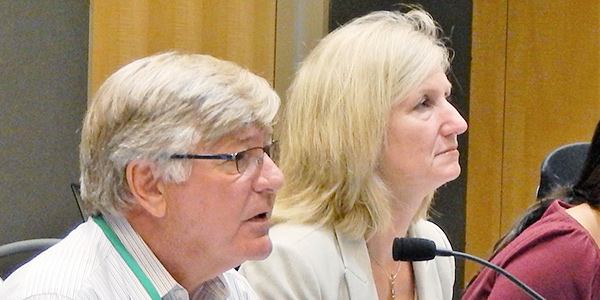By Tom Kleckner
ERCOT stakeholders last week began taking a deeper look at real-time co-optimization (RTC), the market tool that procures both energy and ancillary services every five minutes to find the most cost-effective solution for both requirements.
Asked by Texas’ Public Utility Commission to “reinitiate discussions” with stakeholders on the tool, ERCOT held a workshop on Wednesday. The PUC, which wants to see RTC “sooner rather than later,” is working to hold its own workshop in early June and is soliciting stakeholder feedback on a list of related issues. (See “PUC, ERCOT Set Real-time Co-optimization Workshops,” Texas PUC Briefs: Week of Feb. 25, 2019.)
Meanwhile, the member-led Technical Advisory Committee, which makes recommendations to the ERCOT Board of Directors, has been gathering member feedback on an RTC task force in advance of its upcoming March 27 meeting. TAC Chair Bob Helton, of ENGIE, said in an email to members that the committee’s leadership would like to see the task force led by two co-chairs reporting directly to the committee.
“The task force would not be a voting body, and [its] leadership would report any recommendations to TAC, including any minority positions,” Helton wrote.
The TAC will endorse the group’s final structure, leadership and other details, with the board making the final decision.
“This is a good opportunity for our stakeholders to come together and work to ensure we design something that helps achieve our objectives and reflects the value of ancillary service,” ERCOT COO Cheryl Mele said at a recent market summit.
Staff told stakeholders during the workshop that RTC will efficiently coordinate the provision of energy and AS in the real-time market and, similar to the operating reserve demand curve (ORDC), price AS shortages according to their defined demand curves.
Sai Moorty, ERCOT’s market design and analysis principal, said the RTC process will be executed with each security-constrained economic dispatch run, yielding “better visibility of the constraints and the capabilities of the resources.”
“As a result, the system can be operated more economically and reliably,” he said. “This benefits loads by selecting the lowest-cost resources to provide energy and AS.”
Unlike the ORDC, the SCED engine will apply a demand curve for each AS product, establishing offer-based prices for energy and AS types in the real-time market, staff said. The defined AS demand curve will set AS shortage conditions, and ORDC price adders will no longer exist.
“Real-time co-optimization will definitely impact temporary price spikes we’ve seen outside the ORDC,” NRG Energy’s Bill Barnes said at the same summit. “Demand curves for ancillary service … ensure we’re sending proper price signals during times of scarcity.”
ERCOT grid operations have not yet identified a reliability need to define a local reserve product, staff said, noting the RTC design will co-optimize the required reserves.
The PUC, which has opened a project for RTC (48540), is considering whether to allow financial-only AS offers.
Staff have said it will take four to five years and about $40 million to implement the RTC process and software.





